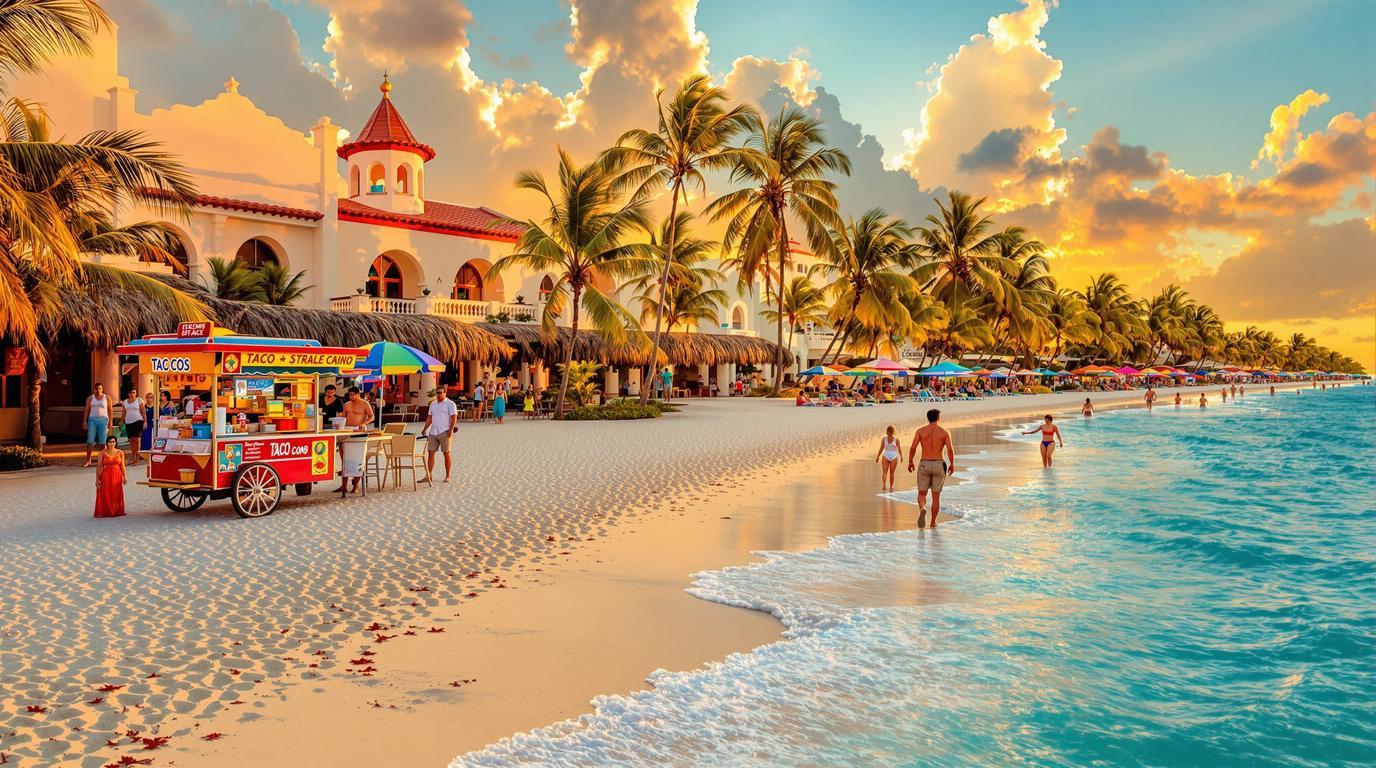The powder-white sands of Playa del Carmen stretch like a silken ribbon between turquoise Caribbean waters and vibrant urban life. This once-sleepy fishing village has transformed into Mexico’s hippest beach destination, yet somehow maintains its laid-back charm. Unlike Cancún’s mega-resorts just 45 minutes north, Playa (as locals call it) offers something increasingly rare: a walkable beach town where boutique hotels and authentic taquerias stand shoulder-to-shoulder.
The urban beach that defies expectations
Playa del Carmen’s main beach spans nearly 10 kilometers of coastline, with its heart at coordinates 20.6274° N, 87.0799° W. What makes this urban beach extraordinary is the seamless blend of accessibility and beauty. Unlike many city beaches worldwide, here the water remains crystalline clear despite the proximity to downtown.
“What I love about Playa is how the beach connects to real life. Step off the sand and you’re immediately in the pulse of Mexican culture—no sterile resort bubble,” explains Maria Gonzalez, a local tour guide who has witnessed the town’s evolution over two decades.
Beyond Quinta Avenida: where locals actually go
While tourists flock to famous Mamitas Beach Club, locals head south to the quieter stretches near Playacar or north to Punta Esmeralda. Here, the sargassum seaweed (a seasonal challenge from May to October) is often less problematic, and the crowds thin considerably. These areas offer a glimpse of what Caribbean beaches looked like before mass tourism arrived.
The November-April sweet spot
Timing is everything when visiting Playa del Carmen. November through April delivers idyllic weather—warm days averaging 80°F (27°C), low humidity, and minimal rainfall. This window also largely avoids hurricane season and the worst of the sargassum influx that can sometimes affect Caribbean destinations including Brazil’s magical bays.
The cenote connection: underwater cathedrals
Playa del Carmen’s true magic extends beyond its beaches to the cenotes—natural limestone sinkholes filled with crystalline freshwater—scattered throughout the surrounding jungle. These geological wonders, considered sacred by ancient Mayans, offer swimming experiences rivaling Europe’s most magnificent cathedrals in their awe-inspiring beauty.
“Each cenote has its own personality. Some are open to the sky, others are completely underground with stalactites. They’re portals to another world,” says Roberto Diaz, local environmental guide specializing in cenote preservation.
Sunrise rituals: dolphin encounters without the crowds
Early risers witness Playa del Carmen at its most magical. At dawn, when the Caribbean turns milk-glass smooth, local fishermen push their colorful boats offshore while occasional dolphins frolic nearby. These natural encounters rival the famous wildlife experiences of Africa, yet remain refreshingly unorchestrated.
The Cozumel day-trip secret
From the municipal pier, a 45-minute ferry ride transports visitors to Cozumel island’s spectacular reefs. Smart travelers book the earliest ferry (usually 7am) to arrive before cruise ships disgorge thousands of passengers, securing a more intimate experience with marine life rivaling Greece’s hidden island gems.
Street food that outshines resort dining
Playa del Carmen’s culinary highlights aren’t found in tourist-oriented restaurants but rather in humble street carts along Avenida Juárez. Here, for about 15 pesos (less than $1), you’ll find cochinita pibil tacos—slow-roasted pork marinated in achiote and sour orange—that showcase Yucatán’s distinct culinary heritage more authentically than any resort buffet.
When darkness falls: bioluminescent wonders
Few visitors realize that certain times of year (particularly during darker moon phases) the waters off Playa del Carmen showcase bioluminescence. Night swimmers witness the water illuminate with every movement—a natural light show that feels otherworldly yet requires no special equipment beyond a willingness to swim after sunset.
As evening settles over Playa del Carmen, the city doesn’t lose its soul to thumping nightclubs. Instead, it transforms into an open-air living room where multi-generational families stroll Quinta Avenida, street musicians perform impromptu concerts, and the boundary between tourist and local blurs into something far more authentic—a coastal town that remembers its roots even as it embraces its future.
